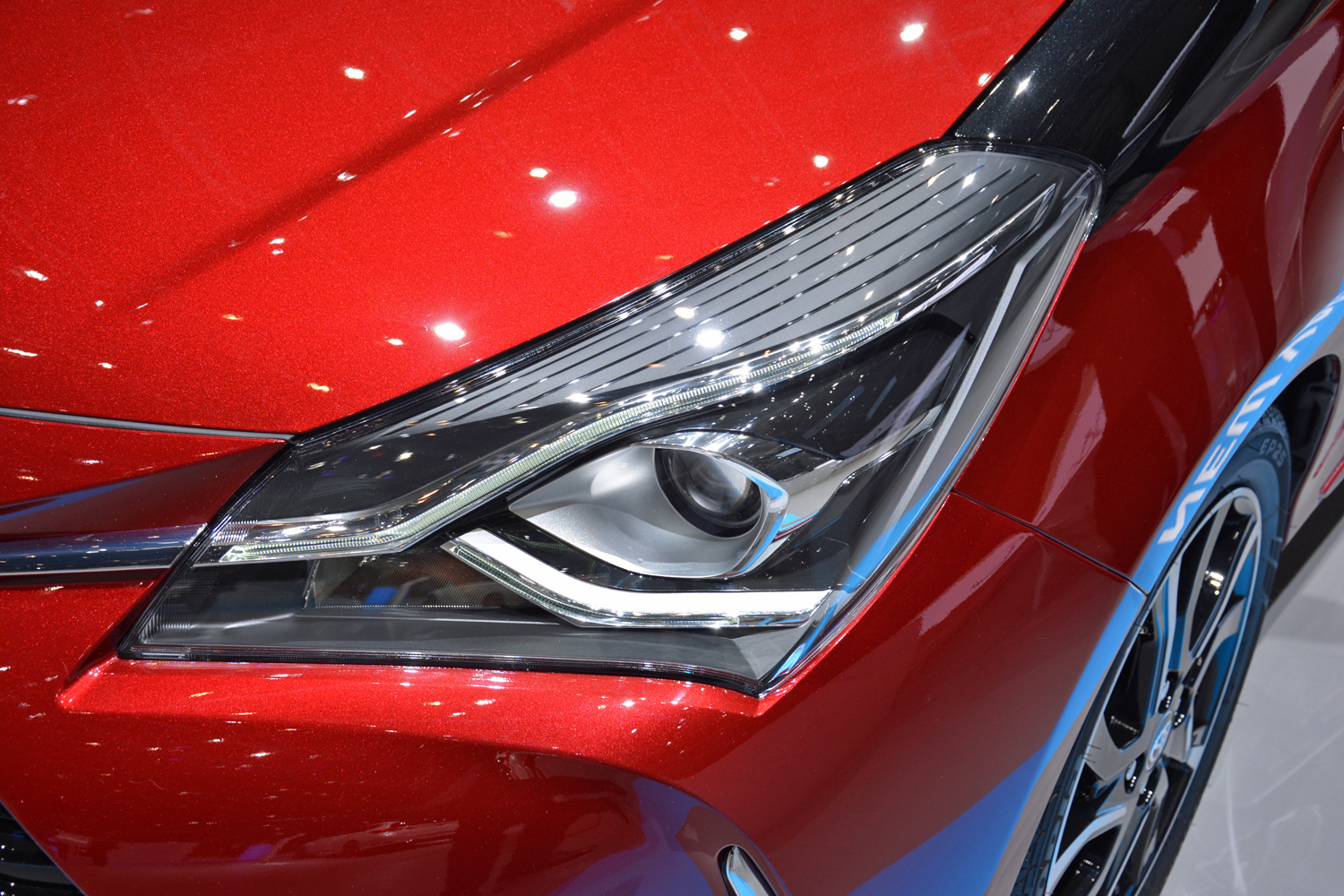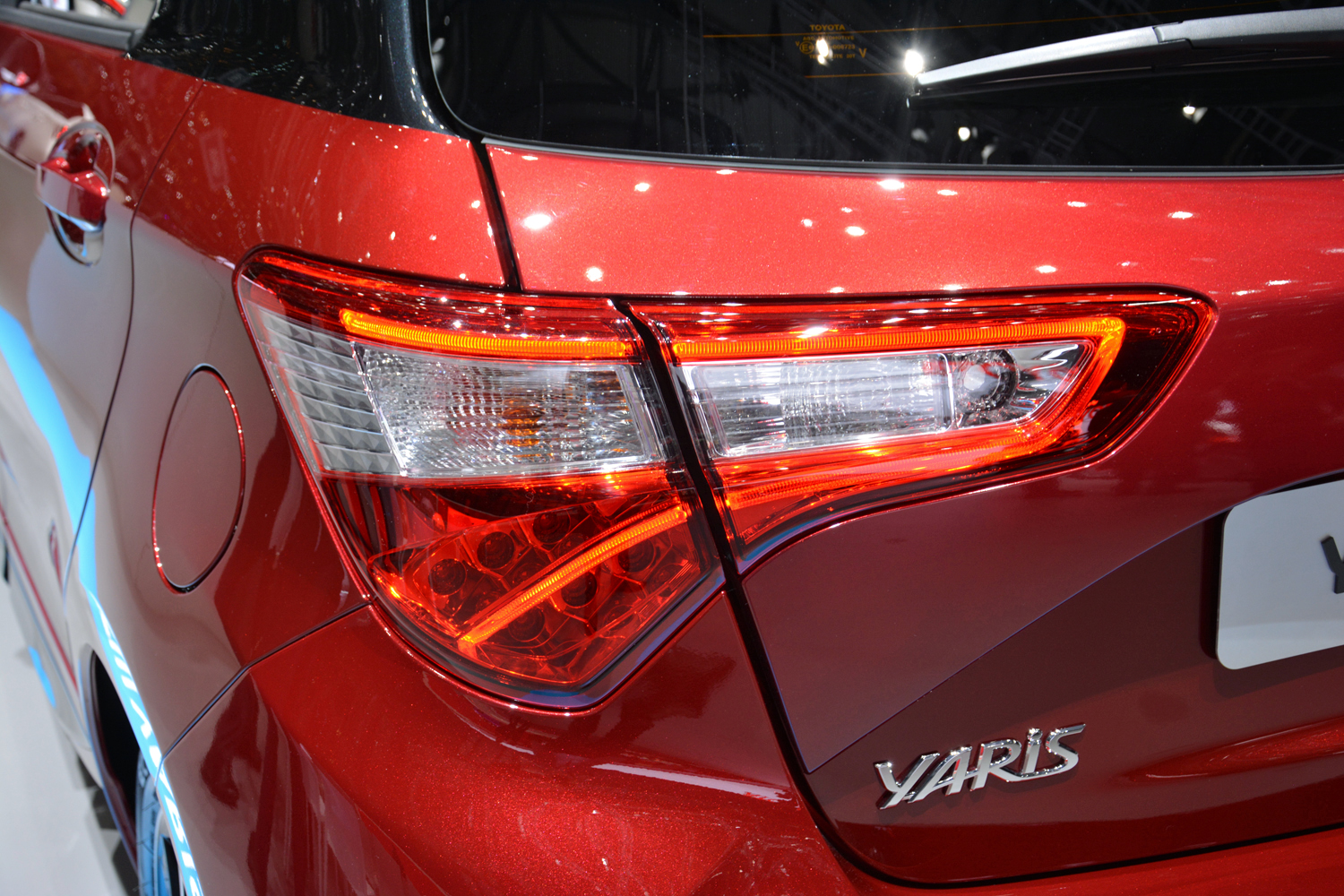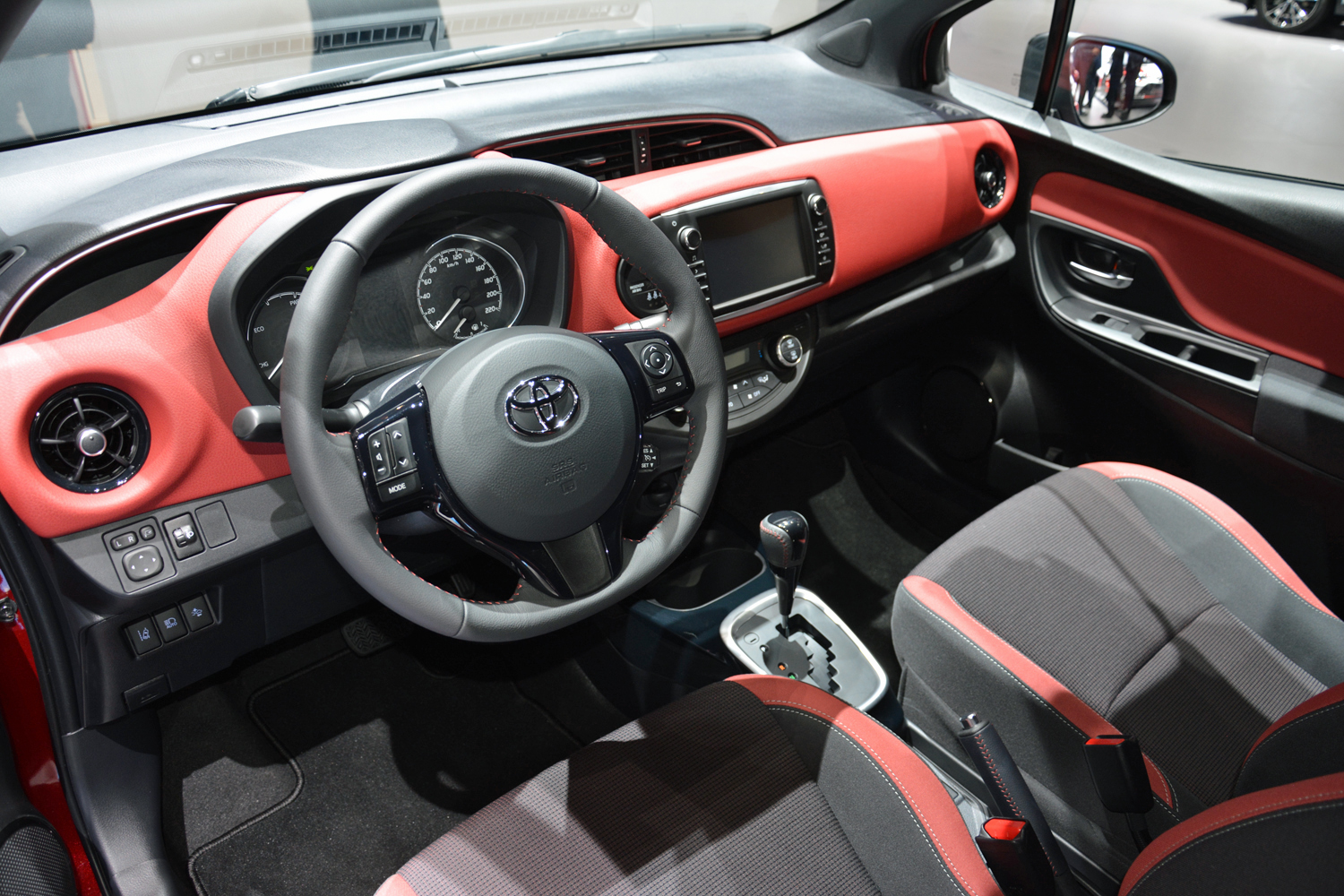Toyota has comprehensively updated the Euro-spec version of the Yaris, and the city-friendly hatchback just made its public debut at the 2017 Geneva Auto Show.
Outside, the Yaris receives a revised front end with new headlights, and redesigned tail lamps that stretch into the hatch to emphasize the city car’s width. The interior is spruced up with new trim pieces, more user-friendly controls, and a thin-film transistor (TFT) information screen integrated into the instrument cluster. Toyota promises all variants of the Yaris are quieter than before.
The engine bay is home to a brand-new, 1.5-liter four-cylinder engine developed to replace the current car’s 1.3-liter unit. It produces 111 horsepower and 100 pound-feet of torque at 4,400 rpm. The Yaris now hits 62 mph from a stop in 11 seconds flat, 0.8 seconds faster than the outgoing model. Front-wheel drive and a manual transmission come standard.
A gasoline-electric hybrid model is available, though technical specifications haven’t been released yet.
For speed aficionados, the highlight of the updated Yaris lineup is a range-topping model developed with input from Toyota’s WRC team. Aimed at the Ford Fiesta ST, the yet-unnamed model is equipped with a turbocharged four-cylinder engine that delivers over 210 horsepower.
The Yaris is proof that high-tech safety features previously found only on big, expensive cars are trickling down to economy-focused models. It comes standard with Toyota Safety Sense, a suite of driving aids which includes a pre-collision system with autonomous emergency braking, automatic high beams, lane departure alert, and road sign assist.
Developed in Europe and built in France, the updated Toyota Yaris will go on sale across the Old Continent in the coming months. It’s important to note the model displayed in Geneva in about a month will be the European-spec variant. The Yaris sold on our shores is expected to receive many of the same updates detailed above, and we wouldn’t be surprised to see it debut in April during the New York show.









